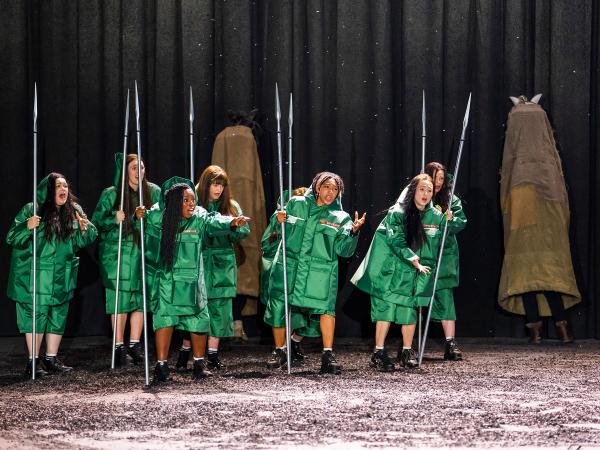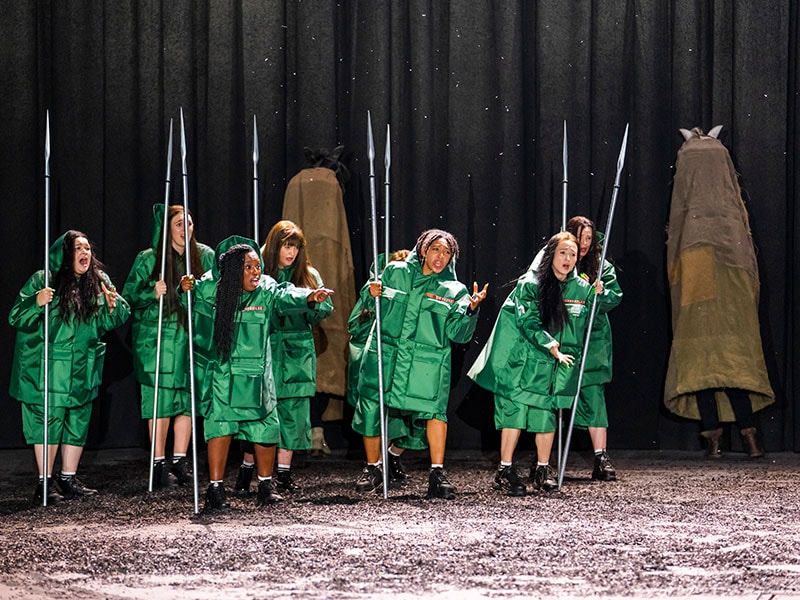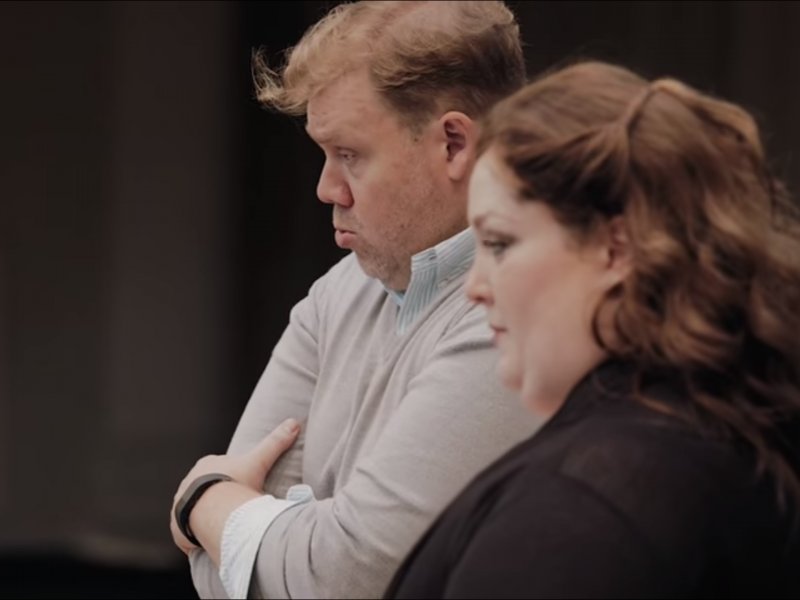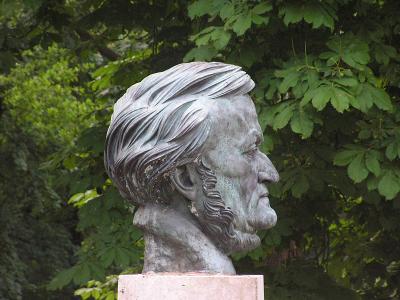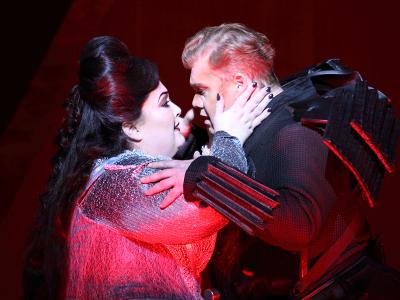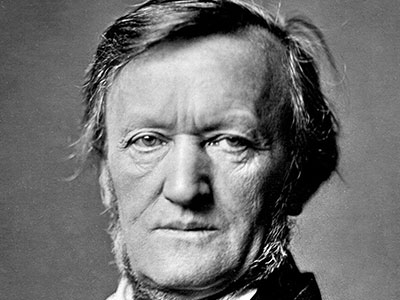
Richard Wagner
(born Leipzig, 22 May 1813; died Venice 13 February 1883)
Richard Wagner was one of the key German composers in the history of music. Just as Beethoven altered the course of music in the nineteenth century, so did Wagner for those who came after him.
Without Wagner, the development of late nineteenth and much twentieth-century music (Richard Strauss, Mahler, Schoenberg, Berg and Webern) would have been different.
Wagner was responsible for changing the orientation of opera, through developing organically conceived through-composed works, expanding the orchestral resources, encouraging new types of singers and exploring innovative theatrical practices. He created a new, revolutionary genre: Gesamtkunstwerk (meaning ‘total work of art’) – which set to combine all aspects of the arts, and became better known as ‘music drama’.
From some of his greatest music compositions and a list of most famous operas to an overview of his career as and his influence on the composers that followed; learn more about Richard Wagner in our guide.
The life of Richard Wagner: A summary
In this section learn more about Wagner’s life including his background, key accomplishments and most important works and controversy later in his life.
Early life and education
Richard Wagner was born on 22nd May 1813 in Leipzig, Germany, the ninth child born to mother, Johanna, and father, Carl, a clerk in the police service. Carl Wagner died six months after Richard’s birth and later the family lived with Carl’s friend, actor and playwright Ludwig Geyer whom Richard almost certainly thought was his biological father. Most likely influenced by their stepfather, several of Wagner’s elder sisters became opera singers or actresses and Wagner himself often took part in Geyer’s performances.
Wagner was enrolled at Pastor Watzl’s school in Dresden, where he had some piano instruction, however he was negligent and self-willed in his studies and struggled to play a proper scale, with his teacher commenting that he would “torture the piano in the most abominable fashion.”
Later after Geyer’s death, Wagner was sent to the Dresdner Kreuzcor – a boys choir boarding school – where he became influenced by gothic opera and began writing his own music and plays with his first drama being heavily influenced by Shakespeare and Goethe.
In 1828, Wagner first heard Beethoven’s 7th Symphony and then shortly after Beethoven’s 9th Symphony, before long Beethoven had become a major influence on Wagner with him going on to write a piano transcription of the 9th Symphony.
Three years later, Wagner enrolled at Leipzig University where despite living a wild student life, he dedicated himself to musical composition studying the scores of the masters, in particular Beethoven. In 1832 his first symphony – Symphony in C Minor was performed in Prague and shortly after he composed his first opera Die Feen (The Fairies).
Career highlights
Wagner’s early career was spent as a composer and conductor, including a spell as the first music director of the opera house in Riga, Russia – where he moved in 1837.
His earliest operas include Das Liebesverbot (The Ban on Love; 1836), a comedy based on Shakespeare’s Measure for Measure, and Rienzi (1842), but it was The Flying Dutchman that established Wagner’s genuine voice. Based on the story of the eternally wandering sea captain, it marks the beginning of Wagner’s fascination with myths and legends of North European origin that would lead to the creation of the operas: Tannhäuser (1845), Lohengrin (1850), culminating in Tristan und Isolde and the four-opera Ring Cycle.
Made up of Das Rheingold (The Rhinegold), Die Walküre (The Valkyrie), Siegfried and Götterdämmerung, The Ring occupied Wagner for over a quarter of a century and remains his most celebrated work. Featuring 16 hours of music over four evenings, the Ring is conceived on an epic scale never previously attempted in the theatre and unequalled since.
While working on the Ring, other projects intervened – notably Tristan (one of the key works of the 19th century), and Meistersinger, which taps into medieval German culture and the figure of the historical Hans Sachs of Nuremberg, and focuses attention on the supreme position of German art.
During this time, Wagner’s political stance and his association with German nationalists in Dresden, leading to the unsuccessful May Uprising meant he had to flee, and he spent the next 12 years living in exile in Switzerland, without any regular income. This political ban wouldn’t be lifted until 1862.
Mein Leben (My Life) was the title of the composer’s autobiography written by Wagner’s second wife, Cosima von Bülow (Liszt’s daughter). The book provides us fascinating and illuminating details of the composer’s home life, as well as the genesis of many of his greatest music dramas. It was for Cosima’s birthday in 1870 (the year they were married) that Wagner composed his perfect orchestral miniature, the Siegfried Idyll, which premiered on Christmas Day with the musicians gathered on the staircase and landing outside her bedroom.
A towering European artistic figure, he was as active as a theorist and theatrical practitioner as he was a composer. He was astute at cultivating wealthy patrons to finance his plans – notably Ludwig II of Bavaria, who bankrolled the construction of the Bayreuth Festival Theatre (which is still active today as the major centre for performances of Wagner’s operas).
Later life
During his later years Wagner spent much of his time in Italy for health reasons and it was here where he worked on his final opera Parsifal, which took him four years to write. Heavily influenced by a new-found interest in Christianity, Wagner’s last work remains controversial due to its treatment of Christianity which was perceived by some as German nationalism.
Despite being troubled by financial complications, resulting in additional funding by King Ludwig, Wagner completed Parsifal in January 1882 and it premiered at the second Beyreuth Festival in the following May.
In February 1883 whilst living in Venice, Wagner died of a heart attack. A funerary gondola carried Wagner’s remains over the Grand Canal after which his body was taken to Germany for burial.
Following his death Wagner’s legacy continued to be controversial with Adolf Hitler a known admirer of his work. Hitler visited Bayreuth regularly and felt Wagner’s operas represented his own vision of the German nation and his music was frequently used at Nazi events.
Whilst Wagner’s music, writings and lifestyle made him controversial in life, many of his ideas and their interpretation are still debated today.
Wagner’s musical style and influence
Richard Wagner’s music compositions all share the same characteristics: an expansion of the musical structures that are governed by the use of leitmotifs (leading motives). These leitmotifs are melodic ideas associated with characters, objects, themes or emotions. The Wagnerian leitmotif expanded beyond the realm of Wagner’s work, and can be seen throughout popular culture, as well as modern music.
The size of the orchestra is vastly increased, with the wind section notably expanded by the inclusion of new instruments such as ‘Wagner’ tubas and rare instruments like the bass trumpet. The score of Rheingold, for example, requires six harps and 18 anvils.
At Bayreuth, Wagner achieved his ideal performing conditions, with the orchestra hidden from view of the audience. The increased size of the orchestra resulted in the development of ‘Wagnerian’ voices: singers with the potential vocal capabilities to perform with the level of instrumental texture. Among the most taxing of Wagner roles are Wotan, Brünnhilde and Siegfried in the The Ring Cycle (Der Ring des Nibelungen), Tristan and Isolde, and Parsifal and Gurnemanz in Parsifal.
Wagner's most famous songs
- ‘Treulich geführt’ (Bridal Chorus’) from Lohengrin
- ‘Prelude and Liebestod’ from Tristan and Isolde
- ‘Winterstürme wichen dem Wonnemond’ from Die Walküre
- ‘Notung! Notung! Neidliches Schwert’ from Siegfried
- ‘Morgenlich leuchtend’ from Dies Meistersinger von Nürnberg
- ‘Dich, teure Halle, grüß’ ich wieder’ from Tannhäuser
- ‘The Ride of the Valkyries’ from Die Walküre
- ‘O du, mein holder Abendstern’ (‘Song to the Evening Star’) from Tannhäuser
- ‘Starke Scheitte schichtet mir dort’ (‘Brünnhilde’s Immolation’) from Götterdämmerung
Richard Wagner's most famous operas
- Der fliegende Holländer (The Flying Dutchman) (1843)
- Die Meistersinger von Nürnberg (1868)
- Der Ring des Nibelungen (The Ring of the Nibelungs or ‘The Ring Cycle’) (1876): Das Rhiengold (The Rhinegold), Die Walküre (The Valkyrie), Siegfried, Götterdämmerung (Twilight of the Gods)
- Parsifal (1882)
- Tannhäuser (1845)
- Lohengrin (1848)
FAQs
Who was Richard Wagner?
Richard Wagner was a German composer, theatre director, and conductor. Known primarily for his operas including his four-opera epic, The Ring Cycle, Tristan und Isolde and Parsifal.
Where is Richard Wagner from?
Richard Wagner was born on 22nd May 1813 in Leipzig, Germany which was then part of the Confederation of the Rhine, however he later moved to Dresden following the death of his father.
Was Wagner a romantic composer?
Romanticism in music is a style of music said to have freedom of expression, particularly in its harmony and orchestration, part of the wider Romantic movement in the 19th Century, which was a reaction to the industrial revolution, it took its inspiration from non-musical stimuli such as nature, literature and poetry and in that sense, Wagner is a romantic composer.
What instruments did Richard Wagner play?
Wagner played the piano and was one of a few composers who consistently used a piano when composing his music. He studied Piano from the age of seven and quickly developed the ability to improvise and play by ear.
Why was Richard Wagner exiled?
Whilst living in Dresden, Wagner was active amongst German nationalist groups often entertaining radical guests at his performances. As well as writing a number of articles supporting revolution, he took part in the Dresden Uprising in May 1849. After the uprising failed, a warrant was issued for his arrest, and he was forced to flee to Switzerland.


